The Science Of Scientific Writing Set A Intro to Paragraphs Features of Maps Examples of Maps Exercise 1 Quiz Diverse Organising Principles Example Exercise for Exercises 2-4 Exercise 2 Exercise 3 Exercise 4 Adding Non-core Content Exercise 5 Exercise 6 Exercise 7 *Exercise 8* Final Page.
OVERVIEW: The way to well-written science
PART I: Paragraphs and Sentences
SET A: Paragraphs: The Maps Behind Them
SET B: Paragraphs: Using Maps to Meet Readers' Expectations
SET C: Paragraph Coherence and Cohesion
SET D: Sentences
SET E: Scientific Sections (including Methods)
SET F: Scientific Sections: The Discussion
SET G : Scientific Sections: The Introduction
SET H : The Paper as a Whole
Examples of the three types of core maps
It is very important to understand the differences between the three types of discourse that explanation, argument and description/report maps represent. In particular it is very easy to confuse explanation and argument. The main difference is that in an explanation the author assumes that the statement in the top box is something known and accepted, and tries to explain it, but in an argument there is no such assumption, so the focus switches to the believability of the statement. Ocasionally, the same statement can sometimes be the starting point for either an argument or an explanation. We will use global warming as a framework to examine the way that descriptions, explanations and arguments can be mapped.
Description/Report Maps
The two maps below present very similar information, but note how the involvement of the author is only made obvious in the second map, which is therefore a report map.
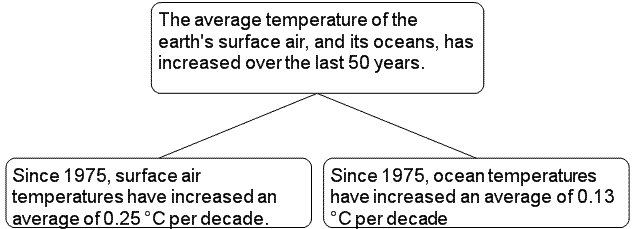
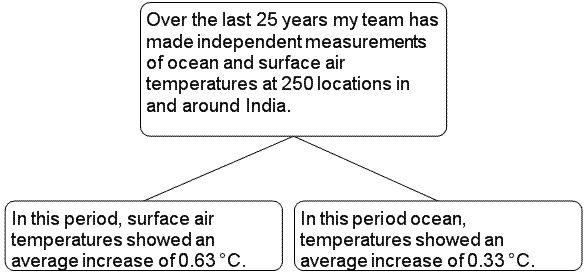
Explanation Maps
In these two explanations, the author assumes the audience believes in global warming, and that they want a mechanism to explain it. The two maps each provide a different mechanism. Notice how, in the first map especially, each box suggests another phenomenon that explains the one in the box above, and that as we go down the map, the information provided becomes more and more specific (or fundamental).
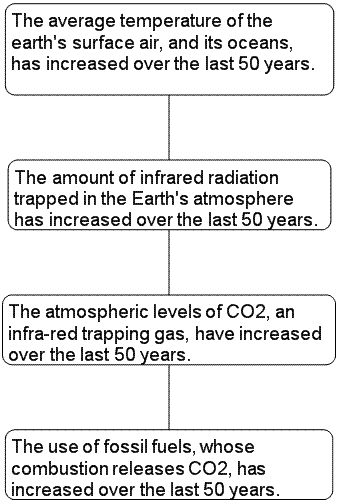
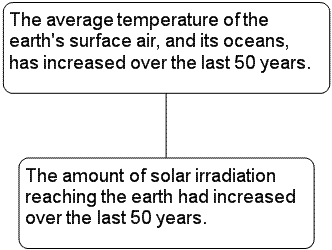
An Argument Map
Finlly we compare the adequacy of the two explanations given above. Note how the wording of the main claim precisely captures the fact that we are comparing explanations. The main claim will often state the author's net assessment of the argument, but sometimes, when the evidence is mixed, a non-core box will need to be added to tell the reader the author's final conclusion
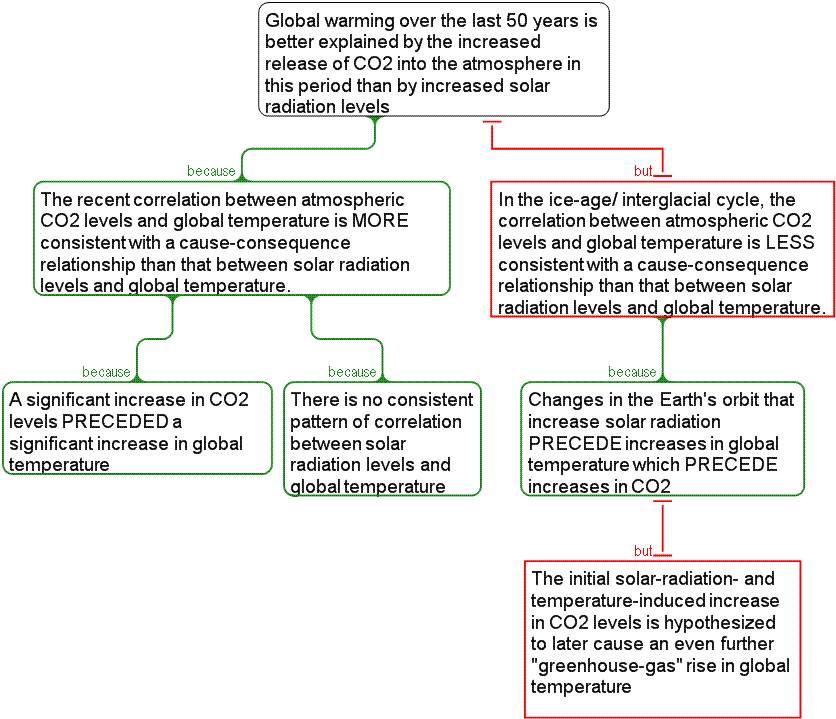
......